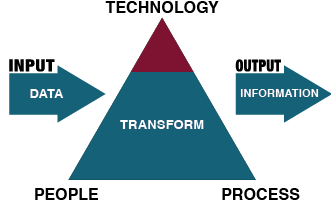3.1. Chapter Introduction
Learning Outcomes
Upon successful completion of this chapter, you will be able to:
- Define digital devices;
- Identify the primary components of a computer system and the functions they perform;
- Explain the factors distinguishing computing power of computers;
- Describe the types of input, output, and memory devices;
- Discuss hardware trends including: mobile computing, integrating computing;
- Assess the impact of commoditization of computers; and
- Summarize the problem of e-waste.
As you learned in the first chapter, an information system is made up of three components: technology, people, and processes. In this chapter we will focus on the first element of technology-hardware. Computer hardware encompasses devices that you can physically touch including desktop computers, laptop computers, mobile phones, tablets, e-readers, storage devices, and input and output devices. Besides these more traditional computer hardware devices, many items that were once not considered digital devices are now becoming computerized themselves. Digital technologies are being integrated into many everyday objects so the days of a device being labeled categorically as computer hardware may be ending. In this chapter, you will also explore digital devices, beginning with defining what is meant by the term itself.


